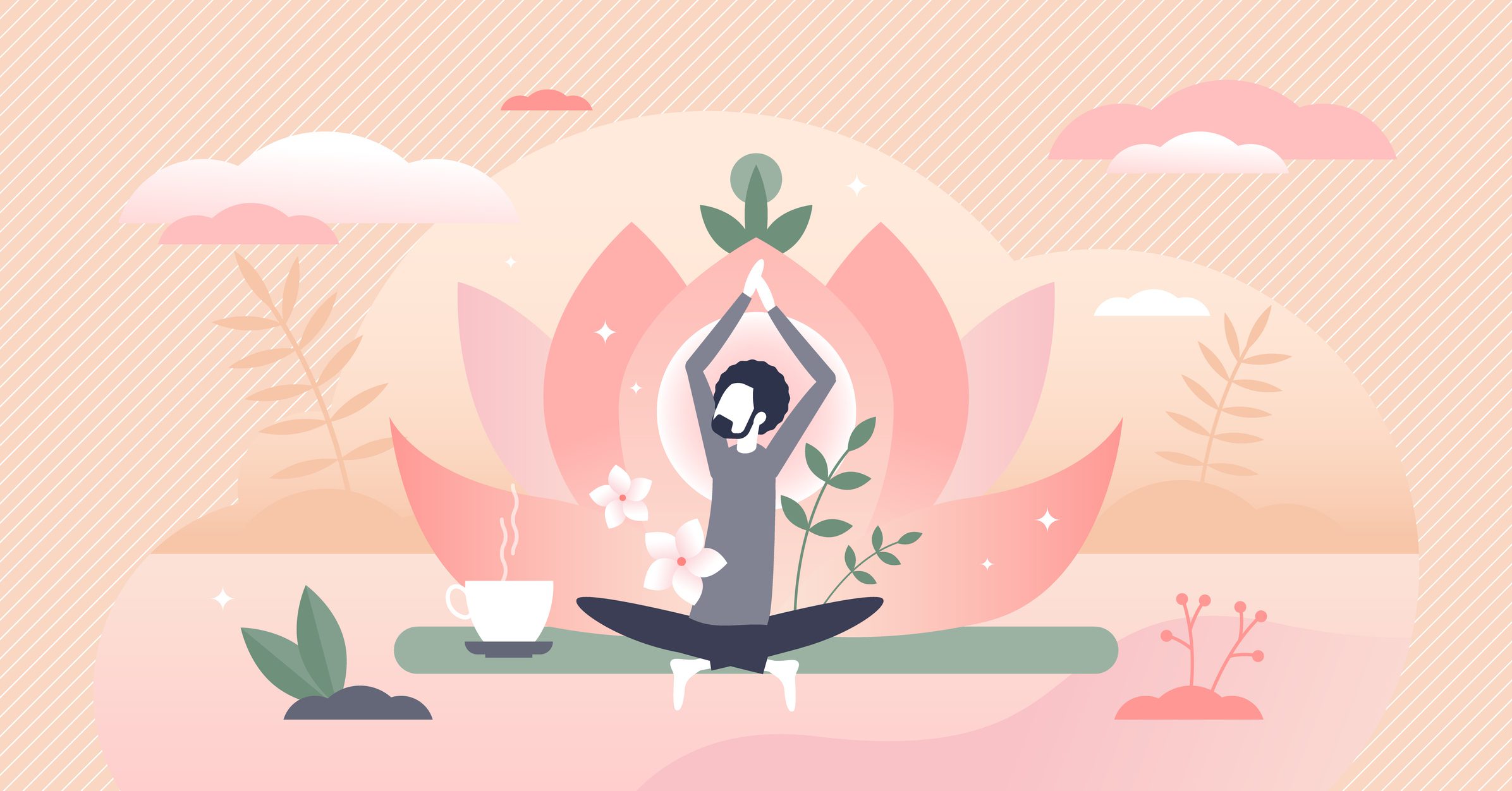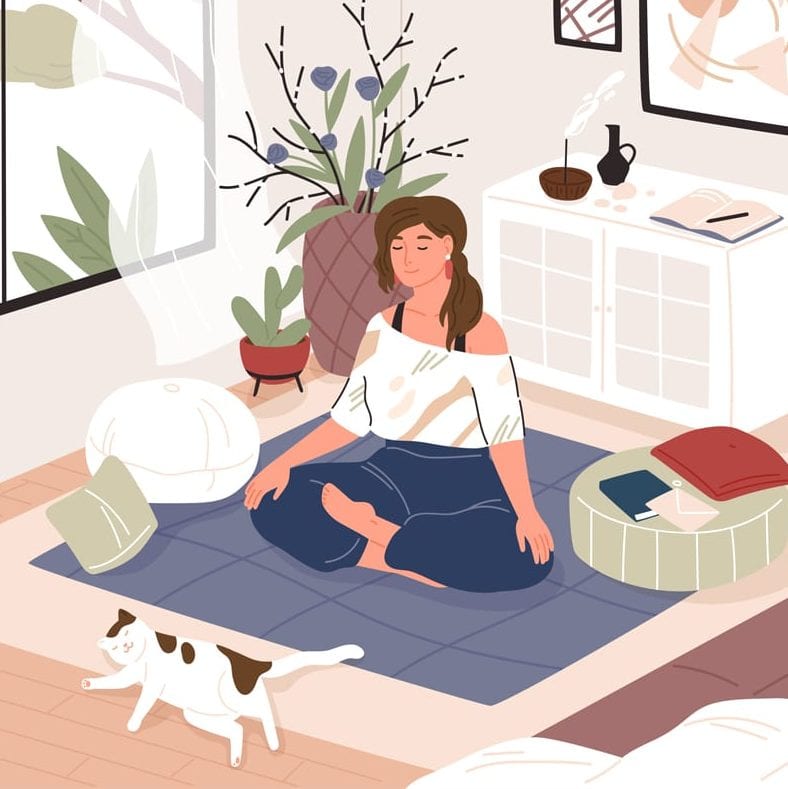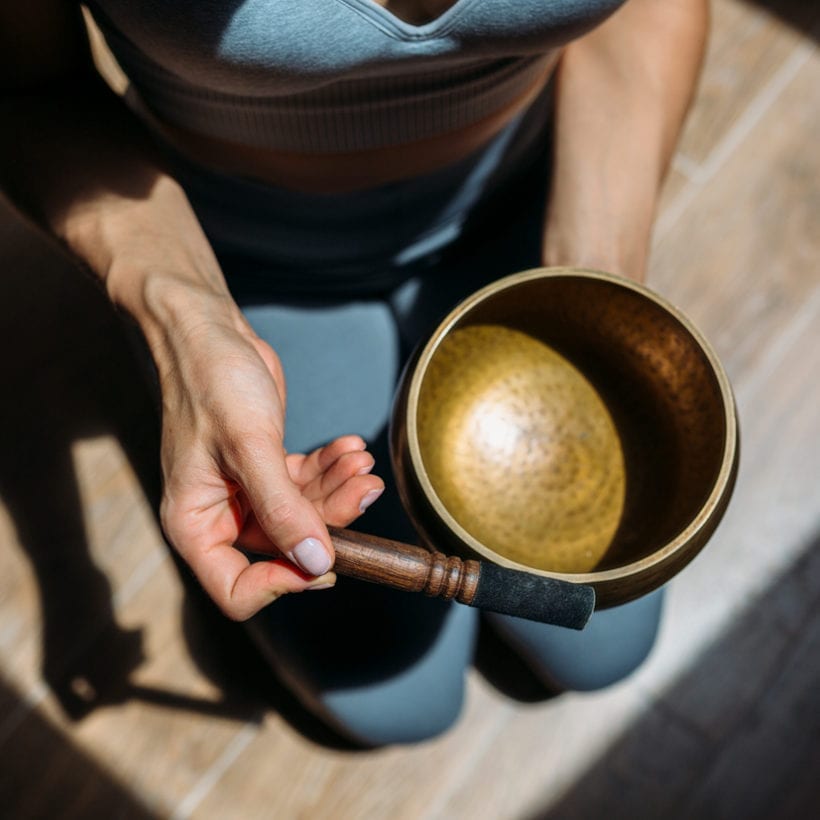On average humans take between 19-27,000 breaths a day. It’s something we barely think about but a process that impacts every aspect of our health. Chances are, you’ve experienced that feeling of shortness of breath when stressed or panicked. This gives you some idea of how the breath, the body and the mind are all connected.
Why breathwork?
The best thing about your breath? You have the power to control it. Unlike many bodily processes, we can consciously control how we breathe and we can choose to breathe better. Consciously controlling your breath has a name: breathwork. “Breathwork is the process of becoming intentionally aware of your own breath. You can use breathwork to improve physical and mental health, performance or emotional wellbeing,” breathwork expert Richie Bostock (referred to by many as The Breath Guy) explained.
Using breathwork exercises to improve your physical state or emotional wellbeing dates back thousands of years — Pranayama (yogic breathing) is one of the core pillars of yoga — but it has grown hugely over the past few years. “Currently, reported levels of chronic stress are higher than ever. Breathwork plays a big role in bringing more peace and balance to our fast-paced world,” Bostock commented. Breathwork appeals to a modern stressed-out audience because it is simple, easy and effective. “You don’t need experience of meditation or practicing mindfulness and you can do it anywhere and at any time,” Bostock said.
The benefits of breathwork
In current times, most of us aren’t breathing properly. Often we have what breathwork expert Charlie Moult calls “a constricted breathing style.” We only use shallow breaths in and out of the chest as opposed to breathing deeply into the diaphragm. “This breathing pattern signals to our brain that we are under a degree of stress. It also leaves us constantly in a state of mild oxygen deprivation,” she explained. Instead, when we practice full, diaphragmatic breaths, we activate our parasympathetic nervous system. “We can sleep better, think better, have more energy, be more creative, be calmer and feel more grounded. It can also power our performance and focus too,” Moult said.
Our breathing impacts every cell in our body. “Your breath affects many systems in your body including your heart, hormones, gut, nerves and immunity,” Bostock said. “When you know how to use it purposefully, you can lower stress and anxiety, boost energy levels, rebalance hormones, improve focus and concentration, aid sleep and digestion, process emotional trauma, relieve chronic pain and better cardiovascular health,” he added. “As you improve your breathing pattern, fully engage the diaphragm and naturally breathe slower and deeper, it has a massive impact on energy. More oxygen into the cells means more energy, it also lowers your heart rate and boosts your immune system,” Moult concurred.
How to include breathwork in your day
You can practice breathwork exercises anywhere and at any time. Even just a couple of minutes of proper belly breathing — slowing the breath down and breathing right down to the diaphragm and out again — can reset how you feel. Moult suggests starting by committing to a ten-minute daily morning practice. “You can also use short breathwork exercises between work tasks, when you’re starting to flag in the afternoon and when you are ready to switch off, rest or sleep,” she added.
Here Charlie Moult shares some breathwork exercises to try:
An energizing breathing practice to try in the morning:
- Sitting comfortably, place one hand on your belly and one hand on your chest.
- If accessible to you, close your eyes and take a moment to be still. Notice how you feel in this stillness and notice your breath.
- Set an intention for your morning practice, for example: “Today, I am going to be present/calm/grounded.” Take a deep breath in and relax out.
- Breathe in through the nose twice, once into the belly, the second into the chest, and breathe out through the mouth with a sigh.
- Continue this breath pattern for 2 minutes and then take a moment again to be still and breathe gently.
- Repeat twice more for an extra energy boost.
A breathing exercise for focus and productivity:
- This type of breath increases oxygen levels and also calms our nervous system, creating a feeling of increased relaxation and improved focus.
- Sitting comfortably, breathe in and out through the nose focusing on breathing into the belly.
- (4 x) Inhale for the count of 4 and exhale for the count of 4.
- (4 x) Inhale for the count of 4, hold for 4, exhale for 4, hold for 4.
- (4 x) Inhale for 8, exhale for 8.
- (4 x) Inhale for 8, hold 8, exhale 8, hold 8.
- Relax and come back to a natural rhythm with your breath.
A breathing exercise for anxiety:
- Sitting tall or lying down with knees bent up, place your hands on your belly and focus on deep breaths in through the nose and out through the mouth making a shhh sound on the exhale.
- Breathe in for the count of 5 and slowly out for 8. Repeat for 3-4 minutes or for as long as needed.
- By lengthening the exhales and focusing on using the diaphragm, we can stimulate the vagus nerve which calms our nervous system.
A relaxing breathing exercise to use before bed:
- Lie down in a comfortable position. Take a few deep breaths focusing on releasing a little tension with every exhale.
- Breathe in for 4 through the nose.
- Hold for the count of 7.
- Exhale slowly through the mouth for 8.
- Continue for 5 minutes or as long as you need. This exercise is said to make you fall asleep in 90 seconds if practiced regularly.






